MCAT Phsyc/Soc: Sensation and Perception
1/106
There's no tags or description
Looks like no tags are added yet.
Name | Mastery | Learn | Test | Matching | Spaced |
|---|
No study sessions yet.
107 Terms
sensation
the encoding of physical stimuli from the environment without interpretation
perception
the decoding of sensation through selection, organization, and interpretation
types of stimuli you can detect
light, sound, touch, taste, and smell
Sensing Visual Stimuli
Light from objects hits the retina on the right or left side of the retina. This signal travels through the optic nerve to the optic chiasm, where left/right signals split to the right/left primary visual cortex, respectively.
optic chiasm
the point in the brain where the visual field information from each eye "crosses over" to the appropriate side of the brain for processing
auditory cortex
strip of cortex in the temporal lobe that is responsible for processing auditory information
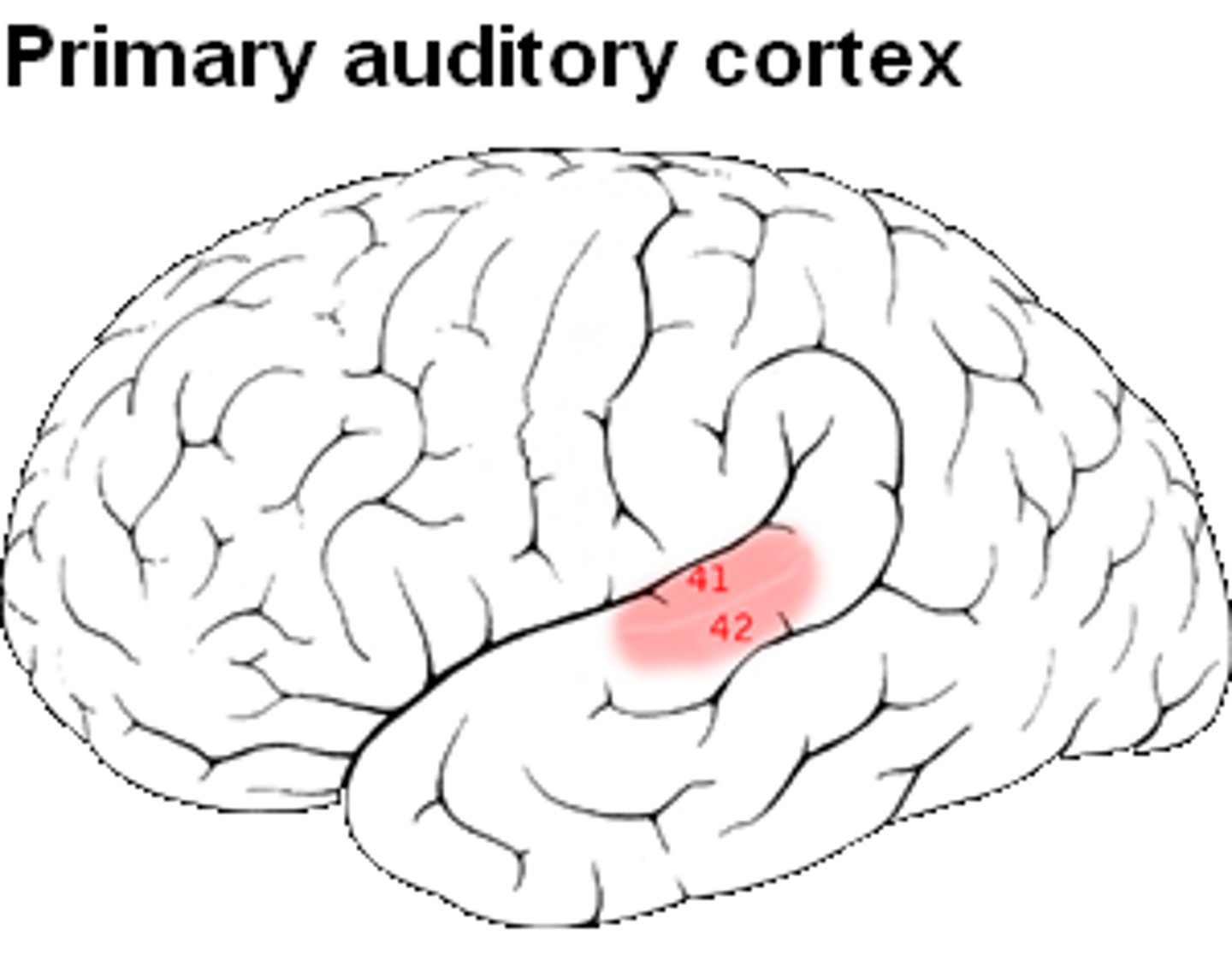
auditory association area
stores memories of sounds and permits perception of sound stimulus

broca's area
Controls language expression - an area of the frontal lobe, usually in the left hemisphere, that directs the muscle movements involved in speech.
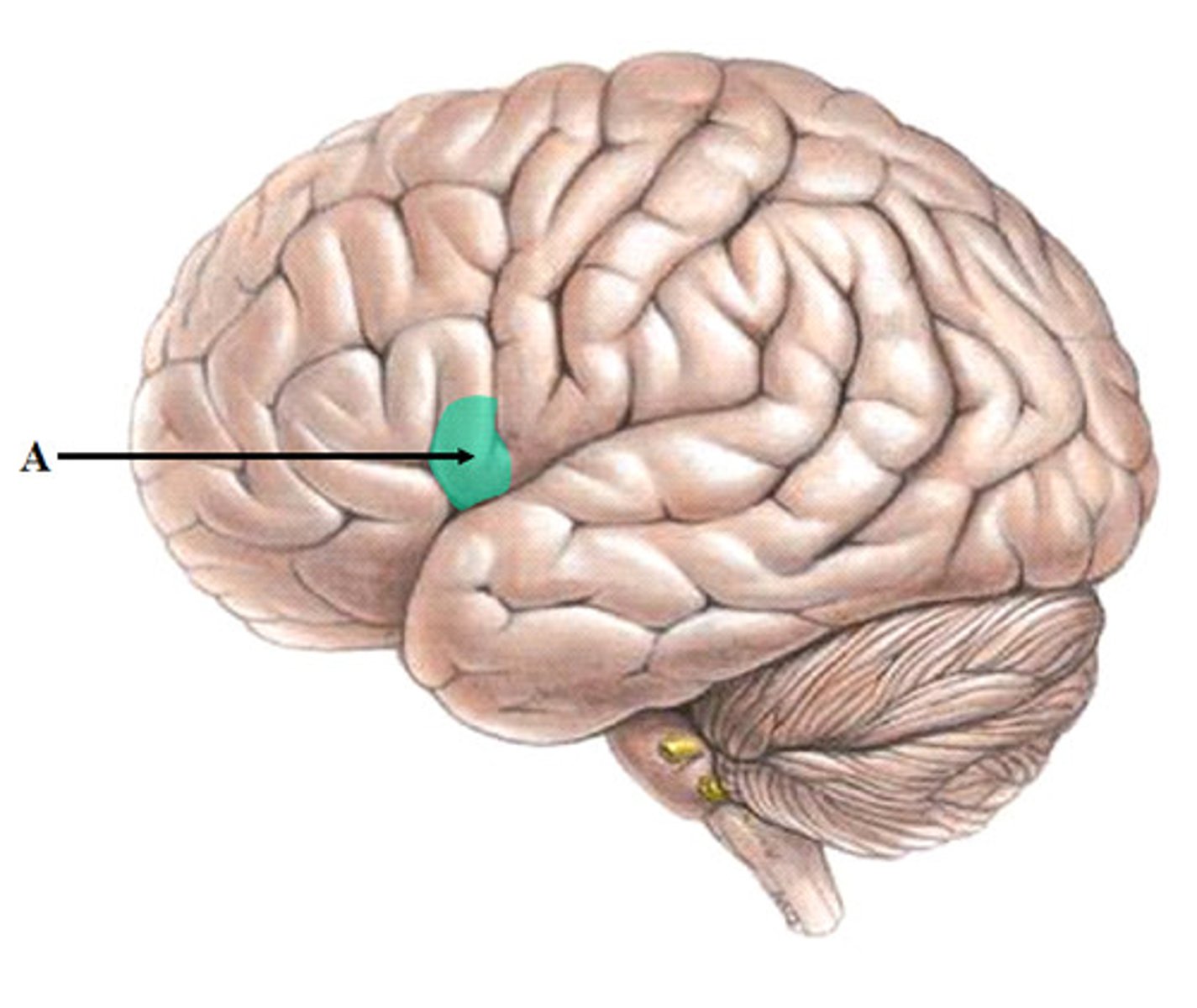
prefrontal cortex
part of frontal lobe responsible for thinking, planning, and language
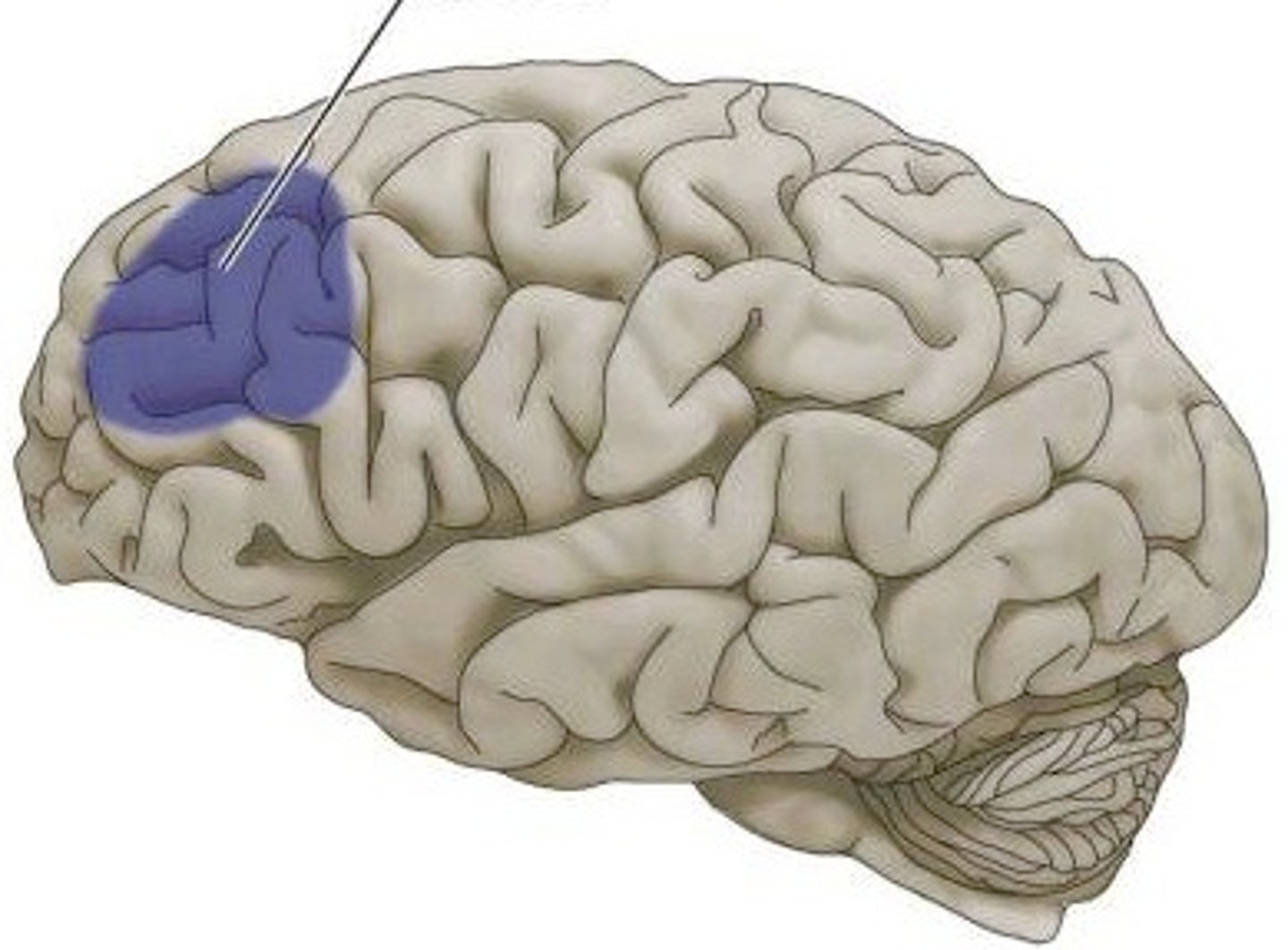
somatic motor association area
responsible for coordinating learned movements
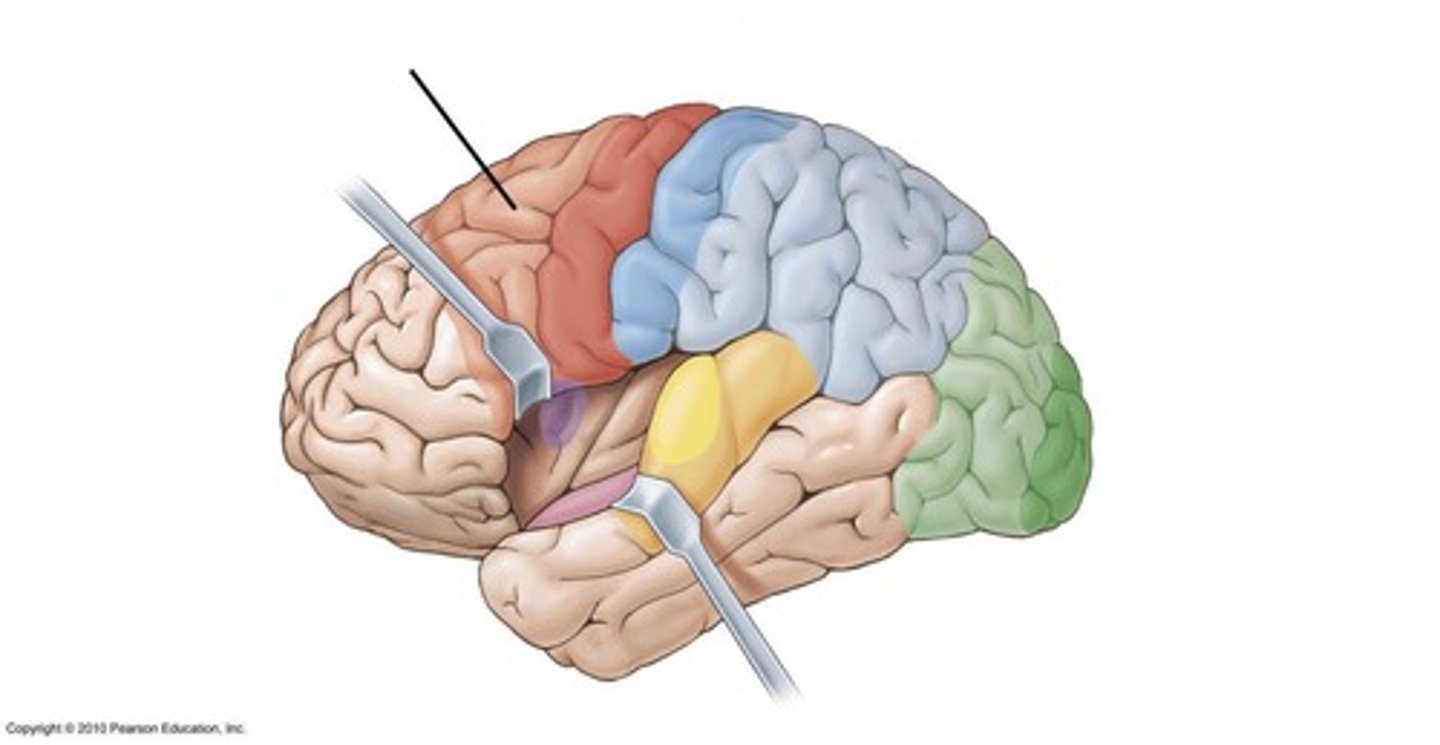
primary motor cortex
the section of the frontal lobe responsible for voluntary movement

primary sensory cortex
regions of the cerebral cortex that initially process information from the senses
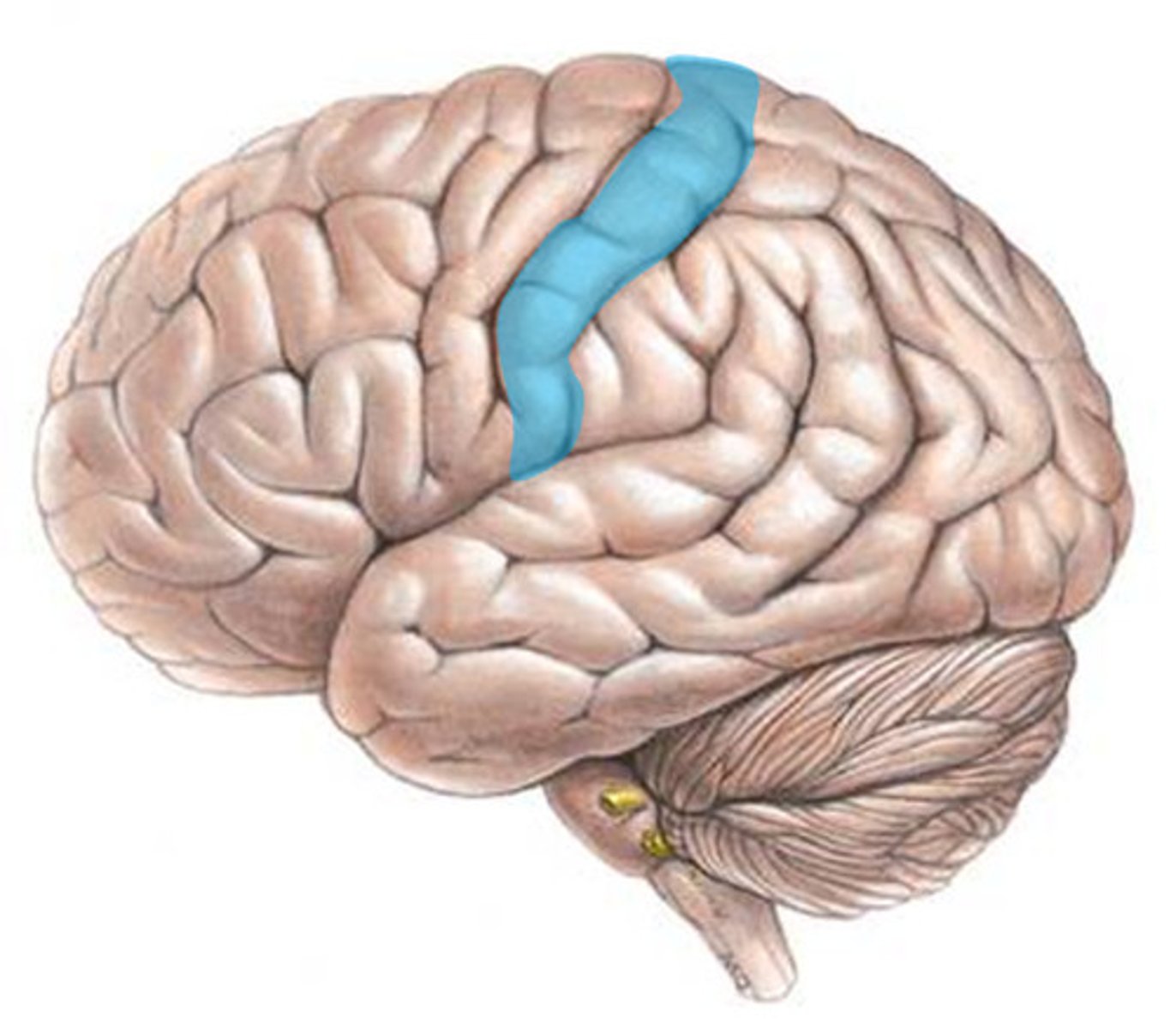
somatic sensory association area
monitors activity in the primary sensory cortex; involved with special senses: hearing, smelling, sight...
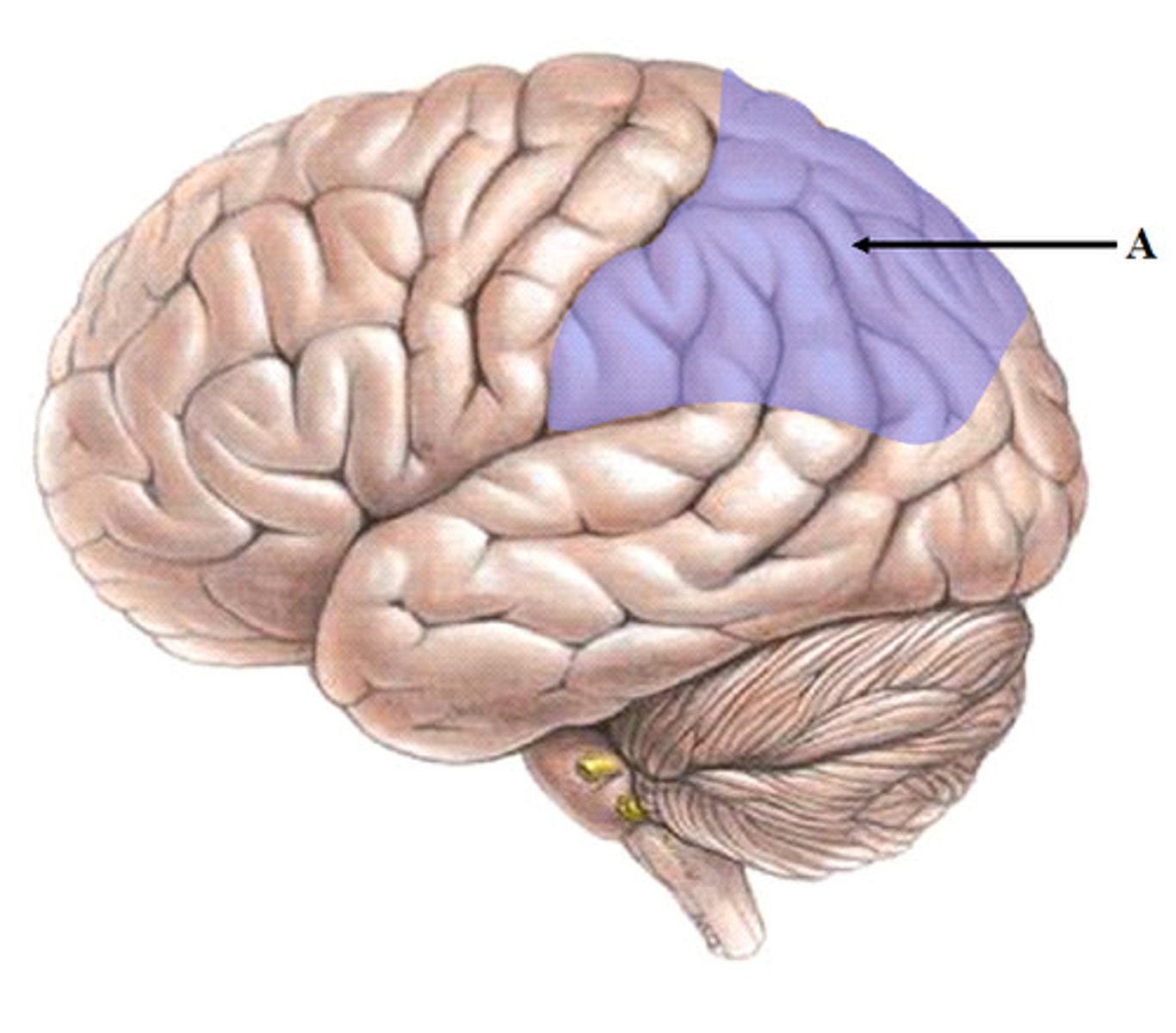
visual association area
interprets information acquired through the primary visual cortex
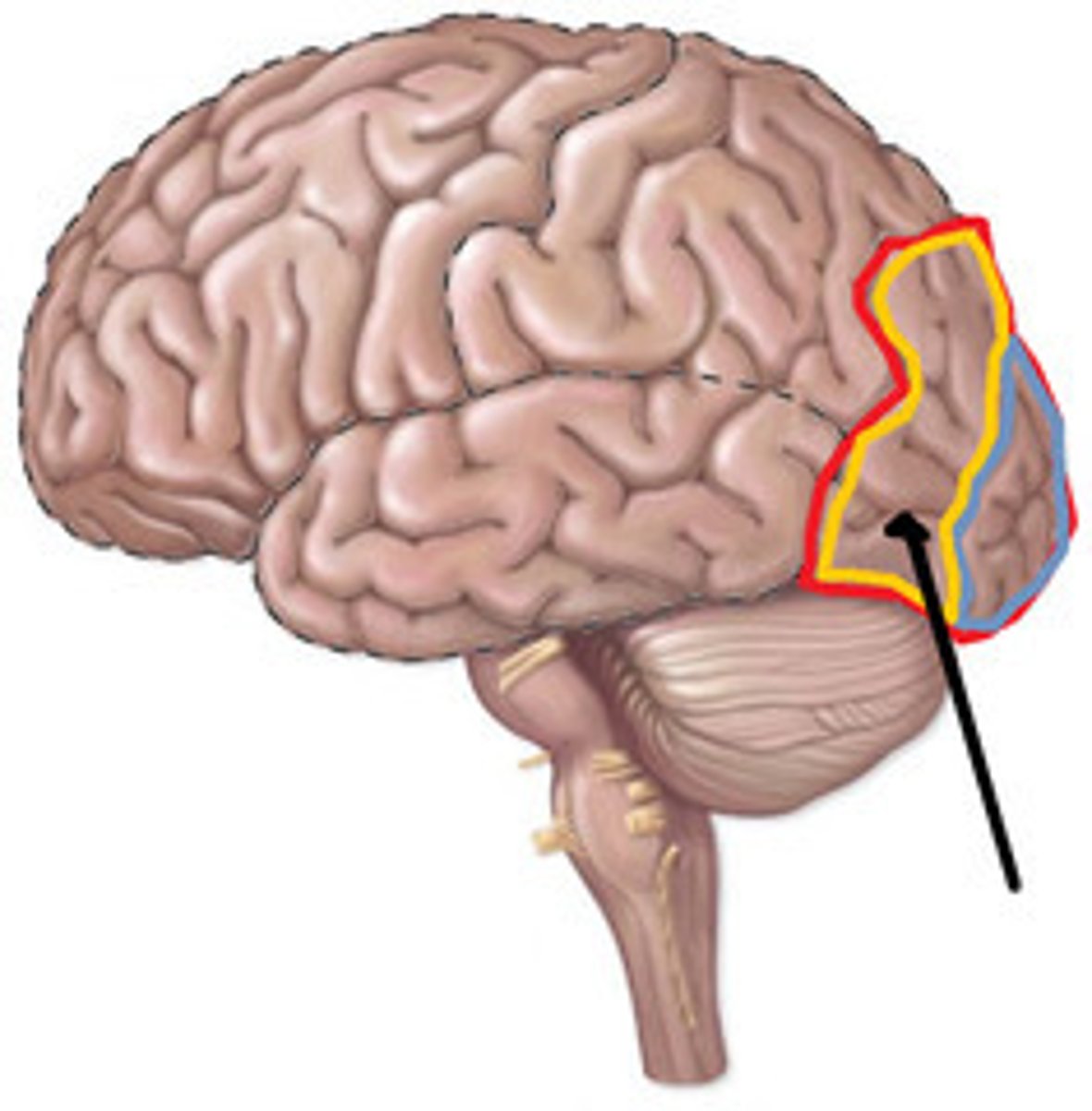
visual cortex
The visual processing areas of cortex in the occipital and temporal lobes.

wernicke's area
controls language reception - a brain area involved in language comprehension and expression; usually in the left temporal lobe
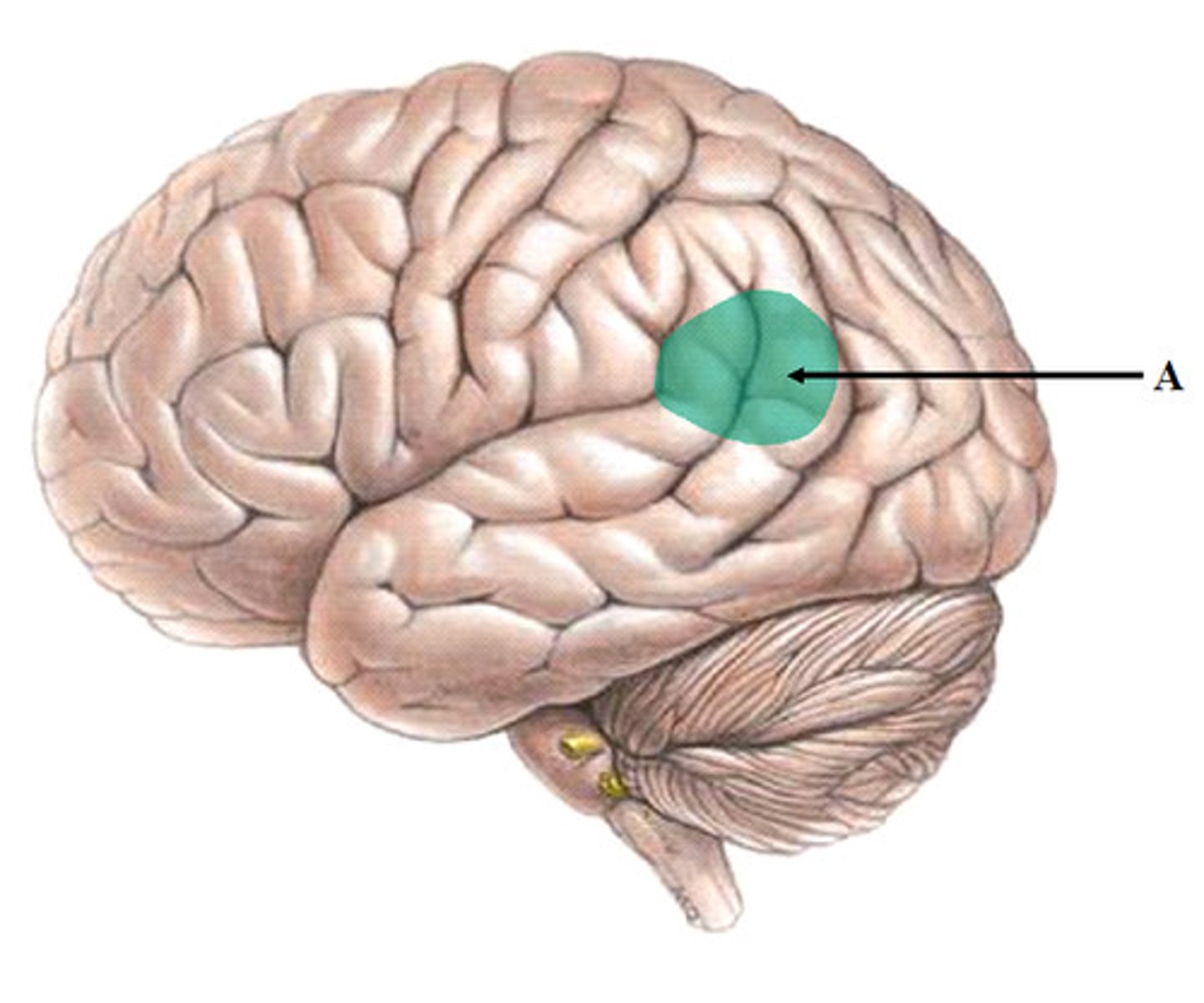
agnosia
Inability to process sensory information, most likely caused by damage to the occipitotemporal border
visual agnosia
the inability to recognize a visual stimulus despite the ability to see and describe it
speech agnosia
Inability to comprehend spoken words despite intact hearing, speech production, and reading ability
frontal lobe
region of the brain associated with concentration, planning, problem-solving, voluntary movement, personality, speech, and smell
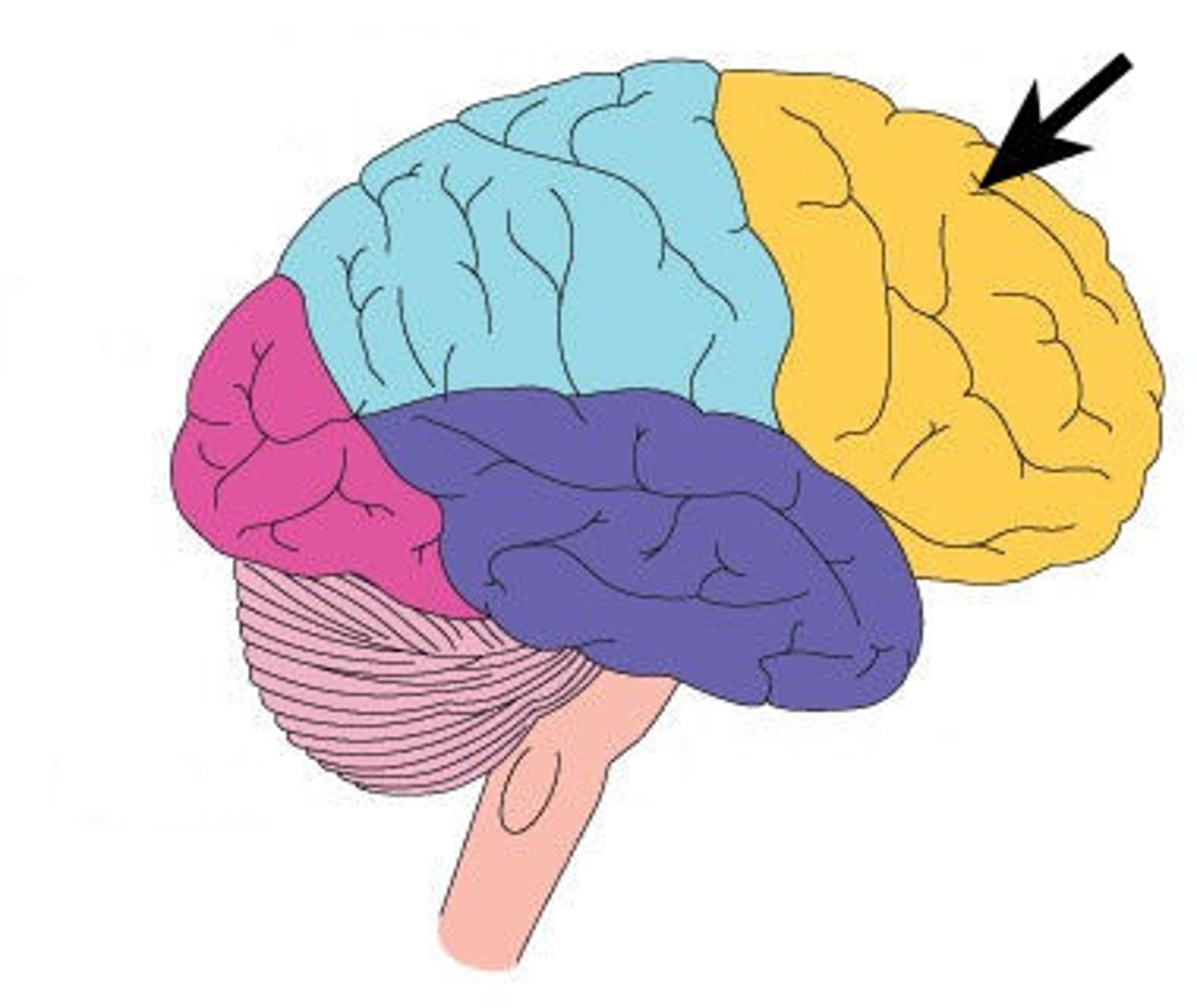
temporal lobe
A region of the cerebral cortex responsible for hearing and language.
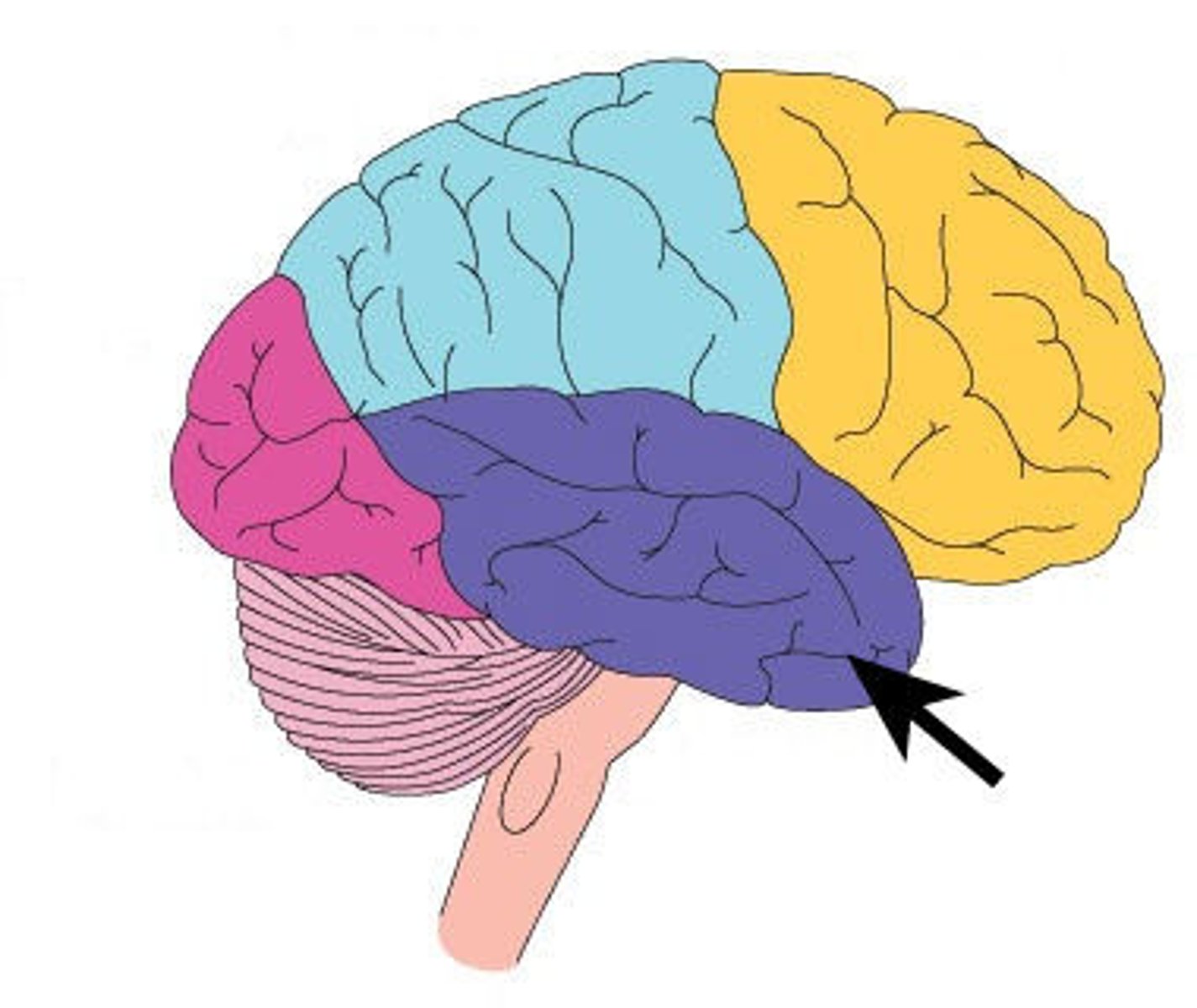
parietal lobe
A region of the cerebral cortex whose functions include processing information about touch and taste
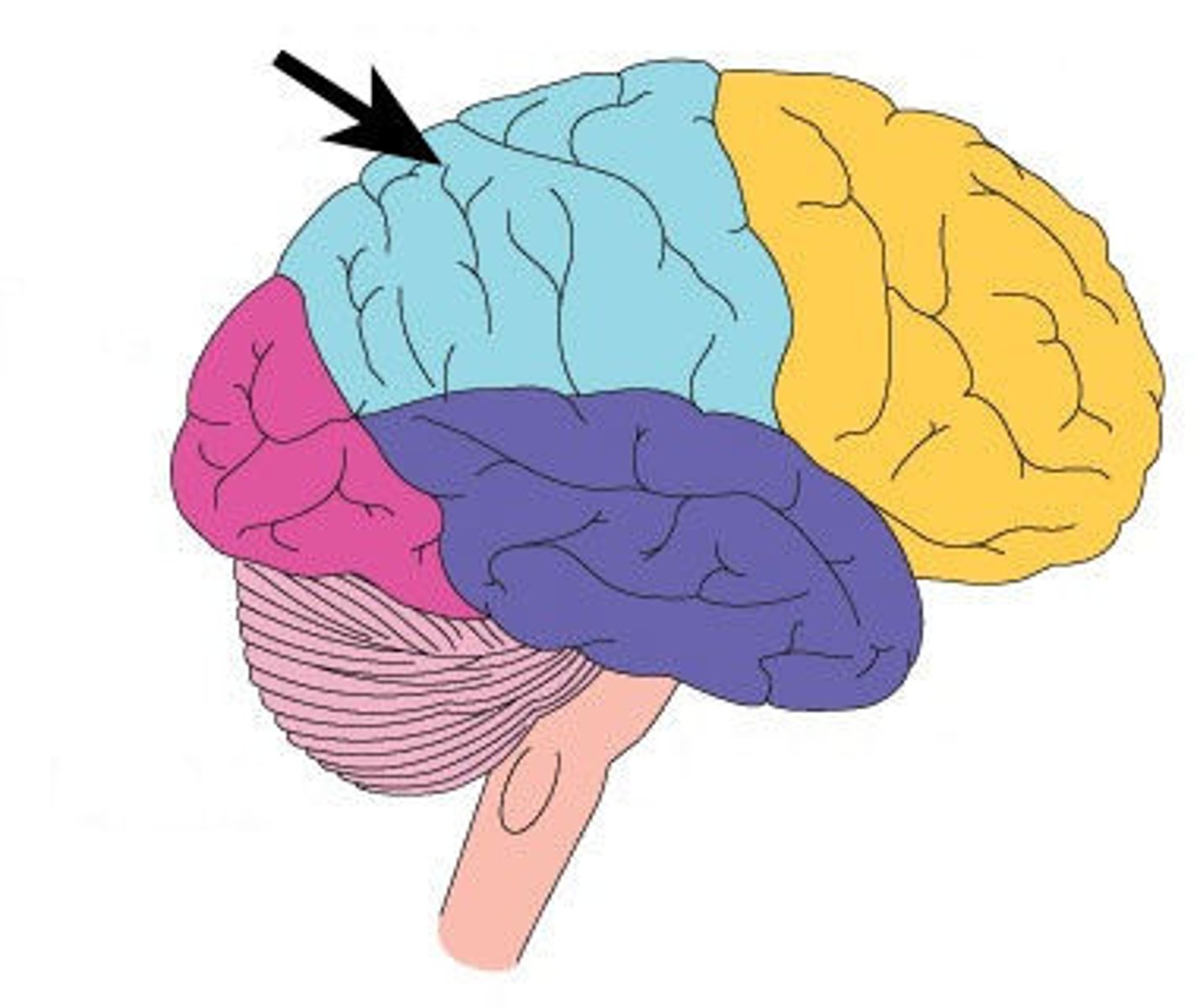
occipital lobe
A region of the cerebral cortex that processes visual information
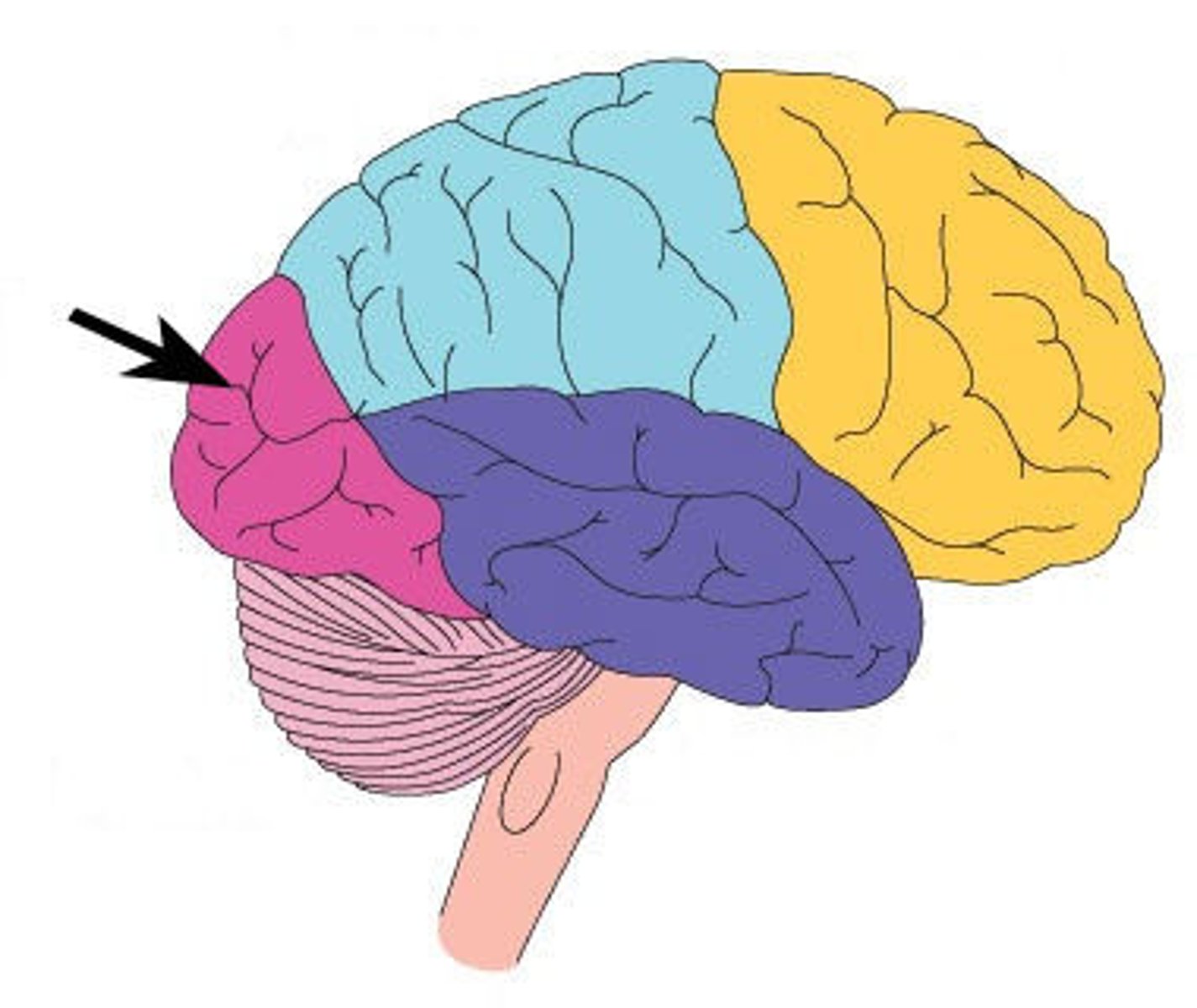
cerebellum
A large structure of the hindbrain that controls fine motor skills like balance and corrdination
kinesthesis
The system for sensing the position and movement of individual body parts
Receptors involved in kinesthesis
mechanoreceptors (mechanical disturbances), proprioceptors (physical body disturbances), thermoreceptors (heat), nociceptors (pain)
brain lateralization
specialization of function in each hemisphere of the brain
functions of the left hemisphere
analytical thought, rational thought, verbal, math/science, logic, right side, visual/motor skills
functions of the right hemisphere
intuitive thought, emotional thought, creative writing, art, left vision, and motor skills
corpus callosum
a broad band of nerve fibers joining the two hemispheres of the brain.
absolute threshold
The minimum amount of a single stimulus that can be detected 50% of the time
difference threshold
The minimum difference that must occur between two stimuli for them to be perceived as different
Weber's law
The size of the just noticeable difference is a constant proportion of the original stimulus value. Different sensory stimuli have different threshold differences
signal detection theory
a method for quantifying a person's ability to detect a given stimulus (signal) amidst other, non-important stimuli (noise)
The accuracy of signal detection depends on
external noise (environmental obstructions) and internal noise (inner/mental obstructions
receiver operating characteristic curve
tracks hit rate (correct identification of signal) vs false alarm rate to represent a person's accuracy at a given task graphically.
modality
the type of stimulus that is being detected, communicated based on the type of receptor firing
Four stimulus properties
modality, location, intensity, and duration of the signal
tonic receptors
generate action potentials as long as the stimulus is present
phasic receptors
Fire only when the stimulus begins, and communicate changes in stimuli
feature detection theory
A theory of visual perception that proposes that certain neurons fire for individual and specific features of a visual stimulus, such as shape, color, line, movements, etc.
parallel processing
Many aspects of a visual stimulus are processed simultaneously rather than in a step-wise fashion
Three stages of perception
environmental stimulus (attended stimulus on receptors), electrochemical processes (transduction, transmission and processing), and experience/action (perception and recognition)
bottom up processing
starts with information from our sensory receptors and builds up to a final product in our brain. Assumes that we start with the details and end with a final representation in our mind
top down processing
starts with a larger concept or idea and works down to the details. Assumes we start with an idea about the final representation and work down to the sensory details
perceptual organization
In order to transform sensory information into useful perceptions, we must organize it
gestalt psychology
studies the predictable ways in which we organize sensory information into meaningful patterns that we perceive
Gestalt principle of emergence
When attempting to identify an object, we first identify its outline which then allows us to figure out what the object is
Gestalt principle of multistability
tendency of ambiguous images to pop back and forth unstably between alternative interpretations in our brains
law of proximity
Elements close to one another tend to be perceived as a unit
law of continuity
we perceive smooth, continuous lines and forms rather than disjointed ones
law of closure
when a space is enclosed by a group of lines, it is perceived as a complete or closed line
law of common fate
Things moving in the same direction appear to be grouped together
law of connectedness
predicts that things that are joined or linked or grouped are perceived as connected
law of simplicity
we perceive the simplest pattern possible
depth perception
ability to see objects in three dimensions despite the fact that images are imposed on the retina in only two dimensions.
retinal disparity
A binocular cue for perceiving depth by comparing images from the retinas in the two eyes, the brain computes distance—the greater the disparity (difference) between the two images, the closer the object.
convergence
A binocular cue for perceiving depth; the extent to which the eyes converge inward when looking at an object
monocular cues
depth cues that depend on information that is available to either eye alone
relative size
a monocular cue for perceiving depth; the smaller retinal image is farther away
interposition
monocular visual cue in which two objects are in the same line of vision and one partially conceals the other, indicating that the first object concealed is further away
relative clarity
a monocular cue for perceiving depth; hazy objects are farther away than sharp, clear objects
texture gradient
a monocular cue for perceiving depth; a gradual change from a coarse, distinct texture to a fine, indistinct texture signals increasing distance. Objects far away appear smaller and more densely packed
relative height
a monocular cue for perceiving depth; objects higher in our field of vision are perceived as farther away
linear perspective
A monocular cue for perceiving depth; the more parallel lines converge, the greater their perceived distance.
light and shadow
a monocular cue for perceiving depth; a dimmer object seems farther away
relative motion
As we move, stable objects appear to move as well. Objects that are near us appear to move faster than objects that are farther away
perceptual constancy
perceiving objects as unchanging even as illumination and retinal images change
shape constancy
the tendency to interpret the shape of an object as being constant, even when its shape changes on the retina
size constancy
the tendency to interpret an object as always being the same actual size, regardless of its distance
lightness constancy
we perceive an object as having a constant lightness even while its illumination varies
Broadbent Filter Model of Selective Attention
Input enters the sensory store, the selective filter removes unattended input and allows it to decay, then the input goes to higher-level processing and working memory

Treisman attenuation model of selective attention
Input enters the sensory store and enters the attenuating filter. If an unattended message is then attended to, the signal moves through higher-level processing and working memory.

cocktail party effect
When you filter out other conversations until your name is mentioned, at which point your attention shifts to this other channel
successful multitasking depends upon
task similarity (if the tasks are similar, it is easier to multitask)
task difficulty (if the tasks are easier it is easier to multitask)
task practice (practiced tasks are easier to multitask)
cognitive schema
a mental framework that allows us to organize our experiences/stimuli and respond to new expereiences/stimuli
assimilation of new experiences
New information is interpreted based on our current schemas
accomodation of new experiences
as we interact with the world we accomadate our schemes to incorporate new information and expereinces
sensorimotor stage
In Piaget's theory, the stage (from birth to about 2 years of age) during which infants know the world mostly in terms of their sensory impressions and motor activities
Milestones of the sensorimotor stage
object permanence, stranger anxiety
preoperational stage
In Piaget's theory, the stage (from about 2 to 6 or 7 years of age) during which a child learns to use language but uses intuitive not logical reasoning
milestones of the preoperational stage
symbolic thinking, egocentrisim
concrete operational stage
in Piaget's theory, the stage of cognitive development (from about 6 or 7 to 11 years of age) during which children gain the mental operations that enable them to think logically about concrete events
milestones of concrete operational stage
conservation
formal operational stage
in Piaget's theory, the stage of cognitive development (normally beginning about age 12) during which people begin to think logically about abstract problems
milestones of the formal operational stage
abstract logic and moral reasoning
insight
occurs when we puzzle over a problem, and then the complete solution appears to come to us all at once
heuristic
a rule-of-thumb problem-solving strategy
confirmation bias
occurs when we seek evidence to support our conclusions or ideas more than we seek evidence that will refute them
fixation
occurs when we have structured a problem in our mind a certian way, even if that way is ineffective, and are unable to restructure it we are then unable to see the problem from a fresh perspective
mental set
our tendency to approach stiuations in a certain way becuase that method worked for us in the past
functional fixedness
mental bias that limits our view of how an object can be used, based on how that object is traditional used
availability heuristic
estimating the likelihood of events based on their availability in memory; if instances come readily to mind (perhaps because of their vividness), we presume such events are common
representativeness heuristic
Judging the likelihood of things in terms of how well they seem to represent, or match, particular prototypes (most relevant/typical example), may lead us to ignore other relevant information
social intelligence
ability to manage and understand people
emotional intelligence
the ability to monitor and discriminate emotions in order to guide thinking and action
fluid intelligence
reason abstractly, increased processing speed
crystallized intelligence
accumulated knowledge and verbal skills
fixed mindset
belief that intelligence and abilities are static
growth mindset
the belief that intelligence and abilities can be developed through effort